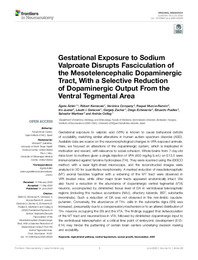Por favor, use este identificador para citar o enlazar este ítem:
https://hdl.handle.net/11000/31166Registro completo de metadatos
| Campo DC | Valor | Lengua/Idioma |
|---|---|---|
| dc.contributor.author | Adam, Agota Maria | - |
| dc.contributor.author | Kemecsei, Robert | - |
| dc.contributor.author | Company Devesa, Verónica | - |
| dc.contributor.author | Murcia Ramón, Raquel | - |
| dc.contributor.author | Juárez Leal, Iris | - |
| dc.contributor.author | Gerecsei, László I | - |
| dc.contributor.author | Echevarría Aza, Diego | - |
| dc.contributor.author | de Puelles Martínez de La Torre, Eduardo | - |
| dc.contributor.author | Martínez Pérez, Salvador | - |
| dc.contributor.author | Csillag, Andras Laszlo | - |
| dc.contributor.other | Departamentos de la UMH::Patología y Cirugía | es_ES |
| dc.contributor.other | Instituto de Neurociencias | es_ES |
| dc.contributor.other | Departamentos de la UMH::Histología y Anatomía / Instituto de Neurociencias | es_ES |
| dc.date.accessioned | 2024-02-06T17:10:36Z | - |
| dc.date.available | 2024-02-06T17:10:36Z | - |
| dc.date.created | 2020-06 | - |
| dc.identifier.citation | Frontiers in neuroanatomy 2020 Jun 5:14:29 | es_ES |
| dc.identifier.issn | 1662-5129 | - |
| dc.identifier.uri | https://hdl.handle.net/11000/31166 | - |
| dc.description.abstract | Gestational exposure to valproic acid (VPA) is known to cause behavioral deficits of sociability, matching similar alterations in human autism spectrum disorder (ASD). Available data are scarce on the neuromorphological changes in VPA-exposed animals. Here, we focused on alterations of the dopaminergic system, which is implicated in motivation and reward, with relevance to social cohesion. Whole brains from 7-day-old mice born to mothers given a single injection of VPA (400 mg/kg b.wt.) on E13.5 were immunostained against tyrosine hydroxylase (TH). They were scanned using the iDISCO method with a laser light-sheet microscope, and the reconstructed images were analyzed in 3D for quantitative morphometry. A marked reduction of mesotelencephalic (MT) axonal fascicles together with a widening of the MT tract were observed in VPA treated mice, while other major brain tracts appeared anatomically intact. We also found a reduction in the abundance of dopaminergic ventral tegmental (VTA) neurons, accompanied by diminished tissue level of DA in ventrobasal telencephalic regions (including the nucleus accumbens (NAc), olfactory tubercle, BST, substantia innominata). Such a reduction of DA was not observed in the non-limbic caudate-putamen. Conversely, the abundance of TH+ cells in the substantia nigra (SN) was increased, presumably due to a compensatory mechanism or to an altered distribution of TH+ neurons occupying the SN and the VTA. The findings suggest that defasciculation of the MT tract and neuronal loss in VTA, followed by diminished dopaminergic input to the ventrobasal telencephalon at a critical time point of embryonic development (E13-E14) may hinder the patterning of certain brain centers underlying decision making and sociability | es_ES |
| dc.format | application/pdf | es_ES |
| dc.format.extent | 19 | es_ES |
| dc.language.iso | eng | es_ES |
| dc.publisher | Frontiers Media [Commercial Publisher] | es_ES |
| dc.rights | info:eu-repo/semantics/openAccess | es_ES |
| dc.rights.uri | http://creativecommons.org/licenses/by-nc-nd/4.0/ | * |
| dc.subject | ASD | es_ES |
| dc.subject | axonal growth | es_ES |
| dc.subject | fasciculation | es_ES |
| dc.subject | nigrostriatal pathway | es_ES |
| dc.subject | ventral tegmentum | es_ES |
| dc.title | Gestational Exposure to Sodium Valproate Disrupts Fasciculation of the Mesotelencephalic Dopaminergic Tract, With a Selective Reduction of Dopaminergic Output From the Ventral Tegmental Area | es_ES |
| dc.type | info:eu-repo/semantics/article | es_ES |
| dc.relation.publisherversion | https://doi.org/10.3389/fnana.2020.00029 | es_ES |

Ver/Abrir:
Gestational Exposure to Sodium Valproate Disrupts Fasciculation of the Mesotelencephalic Dopaminergic Tract, With a Selective Reduction of Dopaminergic Output From the Vent.pdf
2,21 MB
Adobe PDF
Compartir:
 La licencia se describe como: Atribución-NonComercial-NoDerivada 4.0 Internacional.
La licencia se describe como: Atribución-NonComercial-NoDerivada 4.0 Internacional.
.png)